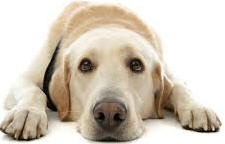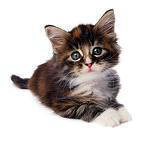Where's the meat?
Opinions differ on the importance of palatability. It's important that your cat finds his or her food tasty; otherwise it might not eat enough. However, most experts say the food's nutritional content is more important than its taste -- after all, you wouldn't feed your kids candy for dinner just because they like it. Savvy pet owners feed their cats what's healthy and don't allow themselves to be trained by their pets to deliver kitty junk food on demand. Cat experts largely agree that finicky eaters aren't born; they are created by their owners.
Some foods are formulated for specific life stages (such as kitten or old age), certain breeds or special needs (such as overweight or hairball formula). The products that appear in the ConsumerSearch Best Reviewed section are available in a variety of formulas, but you may want to do more research or ask your vet if your cat falls into one of these categories. Note that some experts recommend avoiding such niche products altogether.
There has been an explosion of cat foods that mirror human health concerns, such as a reduction in calories or an increase in vegetarian components. However, most experts say these foods are more driven by marketing than by nutritional considerations. Cats are carnivores and require a mostly meat diet, though some vegetable matter (like grass) is an important aid in digestion. Caloric intake is also important, and cutting down on calories may reduce your animal's energy levels substantially.
The following is what reviewers say to look for when purchasing cat food; the brands listed in the ConsumerSearch Best Reviewed section meet most, if not all, of these criteria.
- Look for more meat in the list of ingredients and less grain and vegetable products. Cats are obligate carnivores, which means that their digestive system is designed to primarily accommodate meats and other proteins. Therefore, the primary ingredients in cat food should be chicken, turkey or fish instead of grains (such as corn, wheat or soy).
- Choose foods without dyes or artificial preservatives. There's no proof that dyes or preservatives are unhealthy for cats, but little has been done to research the effects of these ingredients building up in cats' systems over time. The preservatives may be hard on your cat's internal organs. Dyes can stain carpets and upholstery. Premium foods seldom contain dyes and artificial preservatives, but many supermarket brands do.
- Balance canned food and dry food. Canned cat food has an advantage in that it contains a high percentage of water -- which reviewers say matches the water content wild cats would get from a carnivorous diet. Wet food ensures better hydration, because cats won't need to drink as much water throughout the day. Dry food is easier on owners and their wallets, but many experts urge moderation in their use -- and some say that the worst canned food is still better than the best dry food. If using a dry food, look for one that's high in protein and low in carbohydrates, and make sure your cat has plenty of water.
- Read the label. Given the absence of rigorous comparison testing, the food's ingredient list and nutritional data is the best guide to quality. The best products avoid the use of grains like corn, wheat or soy and don't include animal by-products. If cost, availability or your cat's preferences are an issue, try to stick with a food that minimizes such ingredients and lists them further down the ingredient list.
- Pet food safety remains a concern. Past recalls of cat foods because of tainted wheat and rice glutens have spotlighted some major issues regarding pet food ingredients. While the majority of foods have been deemed to be safe, this is an ongoing issue, and it is a good idea to keep a watchful eye on things for the foreseeable future. The Food and Drug Administration and the American Society for the Prevention of Cruelty to Animals websites are good places to start, along with the Truth in Pet Food blog. These web addresses can be found below in Useful Links.
- Reevaluate food labels periodically. Even once you've found a brand or two that you like, consider reevaluating the label every few months. That's because formulas can change, and pet food manufacturers aren't required to change the name of the product or otherwise declare that the formula has been alter


 KIHEI
PET SUPPLY
KIHEI
PET SUPPLY